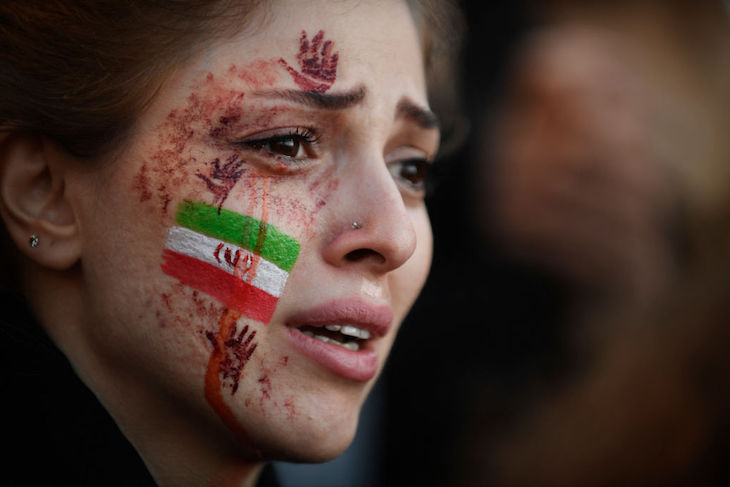Today marks the anniversary of the brutal slaying of 22-year old Mahsa Amini at the hands of Iran’s so-called morality police – a death that fuelled mass protests on a scale not seen since the 1979 Islamic Revolution. Yet 12 months on from what briefly looked like an unprecedented threat to four decades of theocratic rule under the mullahs, the unpalatable truth is that the protesters have failed in their attempt to bring meaningful change to Iran. If anything, the ruling mullahs look more secure than ever. Iran’s opposition forces must buck up their ideas if they are to retain any hope of toppling the regime.
It is all a far cry from the early heady days of protests last year. These followed a remarkable outpouring of public sympathy and anger at Amini’s death. She had been detained three days earlier by the police for displaying a few locks of hair – deemed a violation of Iran’s mandatory hijab laws. Her family claimed she died from blows to her head and limbs, yet the authorities insisted on maintaining the fiction that existing medical problems were the cause of death. This only added fuel to the fire of public anger.
Overnight Amini became a martyr for women’s rights and political freedom. ‘Woman, Life, Freedom’ became the rallying cry and banner of the protest movement that quickly swept through the country.
It may be hard to stomach but Iran’s would-be revolutionaries could learn a trick or two from Ayatollah Khomeini
The protesters had an easy target. The list of the country’s ills makes for grim reading: political repression, a denial of basic rights to women, systemic corruption, and crippling levels of inflation and unemployment. For a brief remarkable moment, it looked like the regime, caught by surprise at the scale of unrest, was unsure how to respond. It wasn’t long though before Iran’s rulers resorted to what they know best: rounding up dissidents, jailing troublemakers, and dispensing summary justice. More than 500 demonstrators are reported to have been killed and thousands arrested. In recent days and weeks, leading up to the anniversary of Mahsa’s death, the regime has intensified the crackdown, arresting family members of protesters, as well as lawyers and academics.
Why then have Iran’s mass protests failed so spectacularly? Well, for one, the protesters lack a leader, someone who embodies their cause, and can act as a focal point for the movement. Revolutions – indeed any form of protest that seeks to overturn the established order – need leadership. Without a figurehead, it is hard to achieve the necessary political momentum. To the outside world, Iran’s ruling elite presents a united face, but in reality it is no different to any power grouping, consumed by tensions, divisions and competing interests. So far, the military and security forces have stayed loyal to the mullahs, because it suits their interests to do so. They judge that Iran’s opposition forces, lacking any obvious leader, are unlikely to win.
The protesters’ mantra ‘Woman, Life, Freedom’ is another barrier to their success. This slogan may have proved seductive in the early days as a way to rally people to their cause. The problem is that it is an expression of idealism and hope, rather than a programme for government. No one knows what the protesters specifically want for Iran. What are their shared political goals, assuming they have any?
The initial mass demonstrations attracted huge numbers of young people, especially women, but no opposition can hope to succeed without a broader base of support across the population. Slogans and banners can never be enough in themselves. A political movement for change requires clarity of aims and purpose, otherwise this latest challenge to the regime risks fizzling out.
It is time for those who want to change Iran for the better to acknowledge that this will require a level of ruthlessness they have simply not shown so far. The mullahs will never be defeated by idealism alone, unfortunately.
It may be hard to stomach but Iran’s would-be revolutionaries could learn a trick or two from Ayatollah Ruhollah Khomeini, who swept to power in 1979. He maintained the support of a large coalition of supporters from different backgrounds and ideologies, even though he actually shared very few of their ideals. As a result, Khomeini succeeded – against almost impossible odds – in overthrowing the Shah’s regime. He was determined to achieve power, whatever it took. And the rest, as they say, is history. There is a lesson in there for today’s Iranian protesters.







Comments